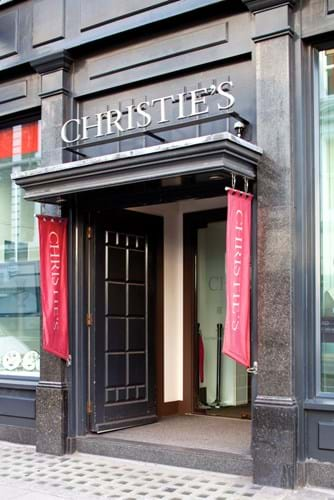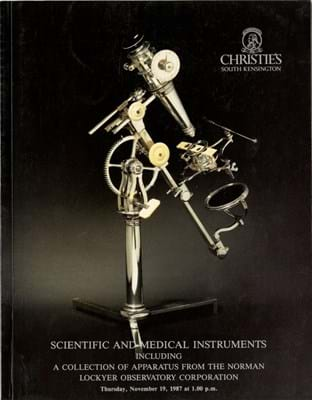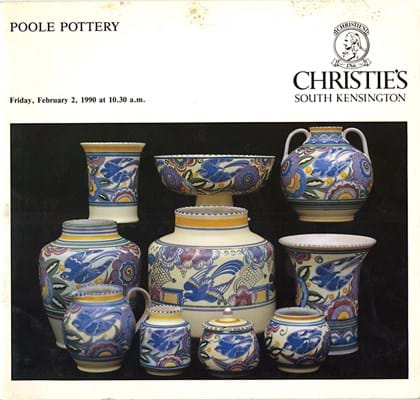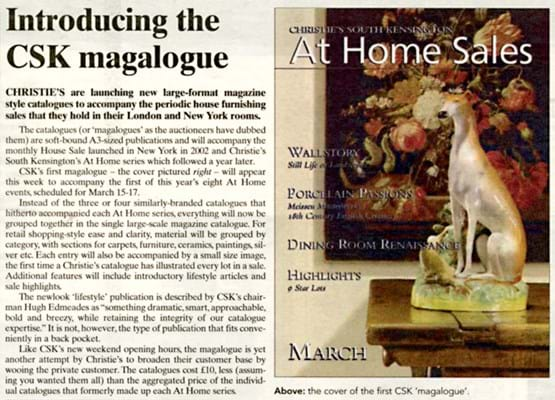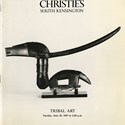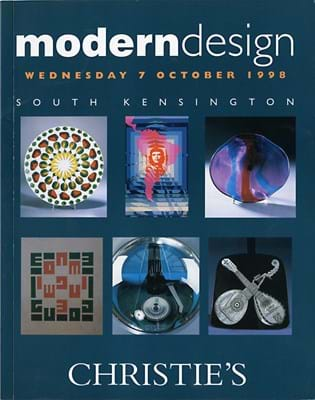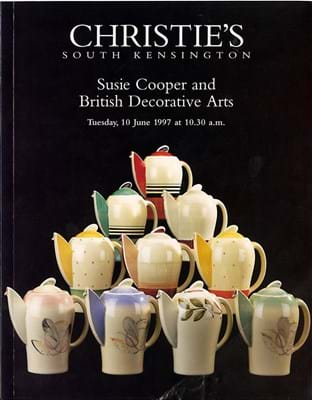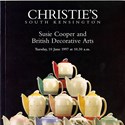Rumours regarding the long-term future of the saleroom have circulated for years.
Somehow, a staff-heavy operation in prime real estate selling ‘affordable’ art and antiques didn’t quite fit with a firm that can turn over £200m in a single evening at Christie’s London HQ, King Street, or the Rockefeller Center in New York.
The targets for global growth were clearly elsewhere. Christie’s opened new offices in Shanghai in 2013, Beijing in 2016 and next month will unveil a space in Los Angeles.
The writing was finally on the wall last year when online sales (118 across 19 categories) far outnumbered the 56 ‘live’ events. Even the flagship Picasso ceramics sale moved online.
Affectionately known as ‘CSK’ or simply ‘South Ken’, the auction rooms on London’s Old Brompton Road have been a central cog in the UK’s art and antiques machine for decades.
While there will be many competent UK salerooms delighted to accept the material Christie’s will now turn away, many people in the art and antiques industry will be sad to see the closure of what was once a focal point of the market in London. Others have been left wondering what lies behind this decision and what it might mean of the wider industry.
Hugo Marsh, Special Auction Services and former toy specialist at CSK
“Christie’s rooms in South Kensington were the central conduit, the reservoir for interesting things because the provincial rooms were not that developed and there was no internet. Christie’s made the sensible strategic move in getting rid of all these departments – it was never their prime business and they were correctly seeing that there wasn’t endless mileage in these things.
But if you cut down your revenue earning areas to a very small number of markets you are very vulnerable to market trends.
Alastair Dickenson, silver dealer and Antiques Roadshow specialist, Godalming
The timings of the viewing days, usually over a weekend, together with the new format of mixing everything up in one catalogue made it perfectly clear that Christie’s South Kensington were doing their best to alienate the trade.
It is a very sad day for the antiques trade as a whole.
Jo Baring, director of the Ingram collection and former head of Modern British art at CSK
“If you go through the alumni of CSK there are so many people in the London art world who got their start at the valuations desk there. It was an amazing place to learn.”
“I don’t know what will take its place now. Maybe one of the regions will step up, but I remember when Olympia closed it was thought that all that business would go to CSK and in the end it just dissipated.
Michael Jeffery, Woolley & Wallis and former decorative arts specialist at CSK
“South Ken’s importance was its central position in creating markets and expanding them. It was key to popularising antiques and collecting at a time when the collector or enthusiast only had a single episode of Antiques Roadshow on a Sunday night to satiate their interest.”
“Like many people, I owe my career to Christie’s South Kensington. I joined in 1992 straight from university as a porter for the Ceramics, Oriental and Decorative Arts departments. We had a sale virtually every week.
“Complementing the sales was the constant influx of people to the valuation desk which was some 30ft long and often three deep with people.
“CSK was a wonderful educational environment. Not only did you see everything, but the staff were a wonderful mix of eccentric people with a vast knowledge and catalogue of experiences.”
Stephen Conrad on Facebook
“They raised the minimum picture price level to £5000 and this affected the number of times dealers could sell there. They allowed the lesser auction houses around London to pick up that business.”
What closure of CSK means for…
London
Much will depend on what the plan is for King Street and for the online sales department (a growing but small fragment of the Christie’s business totalling £49.8m last year).
More ‘mid season’ sales at underused King Street in core categories such as Modern British art, Old Masters, Asian art and decorative arts would go some way to backfilling any CSK hole.
The model at Rockefeller in New York (where there has been no secondary saleroom since the closure of Christie’s East in 2001) will give Christie’s confidence that you don’t always have to sell the bread and butter to get the jam.
Dealers
In truth, CSK had ceased to be a regular call for many traders – many of whom had turned from buyer to vendor.
Some dealers mourned the loss of ‘the old CSK’ a decade ago when Interiors sales began to replace serious collector offerings as its raison d’être. But, when it comes, the final shutting of doors will be acutely felt on a psychological level.
This is arguably the final physical link between Christie’s and the grassroots of the antiques trade.
Regional auctioneers
The impact of any saleroom closure can be overstated.
The merchandise still has to be sold and expertise is seldom lost. Both simply migrate elsewhere.
Referrals from the major auction rooms have been part and parcel of the business for many years and these days what were once crumbs from under the table are now the stuff of a decent meal.
In many collecting areas, vendors already go directly to the regions where they can be confident their merchandise will receive the justice it deserves.
But few will celebrate the demise of another of London’s middle-market salerooms. The once strong ties that bound together the different strata of the antiques trade will be weakened without CSK.


